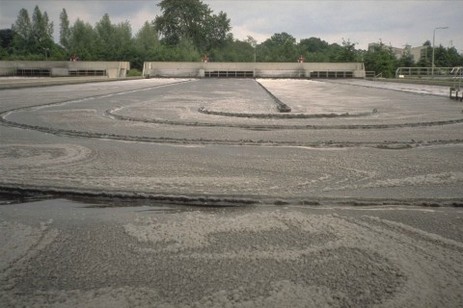- Insoluble nature makes it difficult for bacteria compared to soluble organics.
- Takes time to degrade!
- Causes foaming on aeration basins
- Contributes to floating sludge on secondary clarifiers
- MLSS has oil droplets and excess water which makes for messy dewatering
- Fixed Film or mobilized beds can become coated with FOG - which can foul the media by "smothering" the biofilm
- Long term high FOG can encourage problem microbes such as Nocardia (causes thick greasy foam)
- Get ready to add anti-foam & secondary clarifier polymers.
- Increase wasting rates to get rid of FOG saturated MLSS.
- Try to maintain a Dissolved Oxygen (DO) above 2.0 mg/L to maximize biological activity.
- Check upstream to find cause of FOG and try to make prevent further introduction of FOG.
- With high wasting rates, it is a good idea to add bioaugmentation cultures to increase the number of active degrading microbes in the mixed liquor.
- In fixed film systems adding bioaugmentation cultures can help re-establish the biofilm that was damaged by the FOG. It may be necessary to actually clean some of the media with surfactants if there is heavy grease buildup.


 RSS Feed
RSS Feed